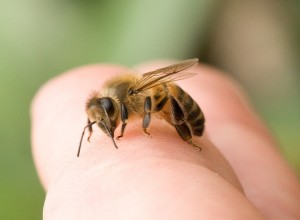Life Skills: Summer First Aid Myths
 Summer means nicer weather, vacation from school and, of course, many more outdoor activities. With this often come more minor injuries. When dealing with a minor injury, do you revert to using those old cures your grandmother taught you? Here are some of those common home remedies that may no longer be considered the best treatment.
Summer means nicer weather, vacation from school and, of course, many more outdoor activities. With this often come more minor injuries. When dealing with a minor injury, do you revert to using those old cures your grandmother taught you? Here are some of those common home remedies that may no longer be considered the best treatment.
Myth: Put butter on a burn All butter does is add unclean, foreign proteins to your injury. A better relief is to run water on the burned area for at least 10 minutes, and then apply an over-the-counter antibiotic ointment. Put a cloth over that and apply cold for pain control.
Myth: Throw your head back to stop a nose bleed Tipping your head back may actually make you breathe blood into your lungs or ingest it into your stomach and vomit. Instead, pinch the nose—as if you’re avoiding a bad smell—and press firmly for a full 10 minutes. If a nosebleed persists for more than 15 minutes, or occurs following a serious injury, go to the emergency room.
Myth: Put vinegar compresses on a sunburn Doctors say to never put acid on a burn. Apply a cool compress and Noxzema, and take some ibuprofen instead.
Myth: When treating a bee sting, squeeze out the stinger Doctors agree that squeezing a stinger may allow venom still in the sac to enter the patient’s system. Scrape the stinger with a credit card or, if possible, use acrylic nails to pull it out. If the patient is having trouble breathing, call 9-1-1 because they may be having an allergic reaction.
Myth: For cuts and scrapes, apply peroxide and leave the area open to the air to scab up Some people believe peroxide can kill the “good” cells—those trying to fight off the bacteria. Simply flush the area with clean water, apply antibiotic ointment and bandage the area to protect it from germs and further injury.
Myth: If you twist a knee or ankle, apply cold only Using the acronym “R.I.C.E.” can help you remember how to treat the injury: Rest the injured area, ice it for 20 minutes each hour, compress it with a bandage and elevate it over the level of the heart.
Myth: Immediately pull out a foreign object stuck in your flesh This may be okay if the object is small and near the surface, but if it’s not, the object may be holding in the blood. For fish hooks in the skin, you could cut the barb and pull out the hook, but an emergency room may better handle this delicate task.

